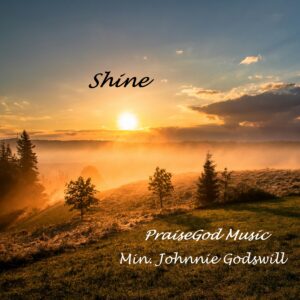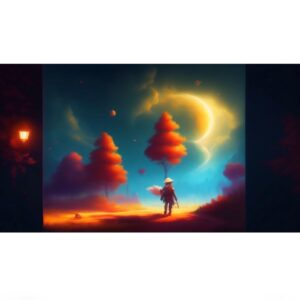

Martin Scorsese’s latest gangster flick, The Irishman, continues the tradition of pairing fantastic needle drops with his storytelling, making for an aural landscape that uses songs to help accentuate jumps in time and location. Working in consultation with longtime collaborator Robbie Robertson, his latest film contains numerous songs both popular and obscure that help tell the story of Frank Sheeran.
Scorsese has had more than his fair share of iconic musical movie moments, from Mean Streets (The Ronettes’ “Be My Baby”) to Goodfellas (the piano outro from Derek and the Domino’s “Layla”) and Casino (The Rolling Stones’ “Can’t You Hear Me Knockin’”). The Irishman treats its music in slightly different ways, eschewing some of the bigger montage moments for deeper integration and long periods where there’s gentle underscore rather than wall-to-wall pop songs.
Here are some stories about certain key tracks that Scorsese and his team have used in The Irishman, as well as a complete soundtrack listing in case you wish to replicate it for your own playlist.
“In The Still Of The Night (I’ll Remember)” – The Five Satins
This Fred Parris-written song has already appeared in a number of iconic film scenes, from Dirty Dancing to American Graffiti. In The Irishman it’s played several time to set both mood and time period. Originally released at the B-side to “The Jones Girl” in 1958, the song would peak at 24 in the charts. Over the years the doo-wop song would gain notice not only through its use is massively popular soundtracks but as cover versions by the likes of Boyz II Men.
“I Hear You Knocking” –Smiley Lewis
The name Dave Bartholomew is sadly unknown to modern audiences, but this giant of New Orleans R&B was responsible for some of the greatest and rockin’-est tunes ever cut to record. His recent passing went unnoticed by many, but his legacy, including on this stompin’ Smiley Lewis track recorded at Cosimo Matassa’s legendary J&M studios, remains immortal. The song was based in part on country and blues progenitors, exactly the kind of musical gumbo that makes New Orleans a true musical capital for the world.
“El Negro Zumbón” –Flo Sandon
This jaunty guitar and percussion piece originated in Alberto Lattuada’s 1951 film Anna, the story of a woman who leaves her sinful nighclub days behind to become a nun. This baião track is evocative of the major influence Brazil held on 1950s pop and Jazz, providing a far more driving beat than the more subdued bossa nova. Flo Sandon was an Italian club singer, and her performance on Anna’s soundtrack resulted in her briefly gaining international fame.
“Tuxedo Junction” –Glenn Miller & His Orchestra
Original a key song at the Savoy, where Chick Webb’s band ripped up the ballroom every night, the song became a massive number 1 hit when recorded by Glenn Miller. The Miller version is notably slower with a more regimented beat more palpable to general audiences of the time.
“The Fat Man” –Fats Domino
Another Bartholomew track, this one co-written by Antoine Domino Jr, known to the whole world as Fats. Released in 1949, the song makes a strong case for being the first rock and roll track. Another song that was set to be a b-side, the wild piano playing, Earl Palmer’s propulsive beat, the blues feel and general attitude presaged decades of music to come, making for an absolute NOLA classic.
“Le Grisbi” – Jean Wetzel
This harmonica and piano number originates in the 1954 film Touchez Pas au Grisbi directed by Jacques Becker, a film about an aging gangster forced out of retirement. This is Scorsese – no thematic coincidences here in the music choices, that’s for sure. The track sounds like a mix of Spagetti Western and some sordid club music, perfect for the mood set in The Irishman.
“Delicado” –Percy Faith & His Orchestra
Another jaunty track, completely with harpsichord and thumping drums to set a positively swingin’ mood. Written by Valdir Azevedo, this chado-style track exploded in popularity when Faith’s easy-listening version softened the edges and rode the fascination with Brazillian exotica right to the top of the charts.
“Song of the Barefoot Contessa” – Written by Mario Nascimbene, Performed by Hugo Winterhalter and His Orchestra
With its bolero-like bounce, this syrupy theme from the 1954 Joseph L. Mankiewicz film starring Humphrey Bogart and Ava Gardner was made all the more shlocky by Hugo Winterhalter and his band.
“You Belong To Me” – Written by Chilton Price, Redd Stewart and Pee Wee King, Performed by Jo Stafford
First recorded in 1952 by Joni James, it was the Jo Stafford version later that year that found success, reaching the top of the charts on both sides of the Atlantic. Stafford’s smooth style and the gentle bounce of the track felt nostalgic even back in the early 50s, a perfect post-war song to remind of times lost.
“Have I Sinned” – Written by Donnie Elbert and Fred Mendelsohn, Performed by Donnie Elbert
The screeching sax of Donnie Ebert’s “Have I sinned” immediately evokes the wail that begins Taxi Driver, that final, magnificent score by maestro Bernard Herrmann. Ebert had a fascinating career that spanned his instrumental songs as well as having written monster hits for the likes of the Supremes (“Where Did Our Love Go”) and a killer Northern Soul favourite (complete with wild falsetto!) “A Little Piece of Leather”
“Nocturne Bolero” – From the film The Barefoot Contessa, Written and performed by Mario Nascimbene
Like the Winterhalter track above, this is more lush and romatic score from the 1954 film, this time performed by the film’s composer and derived from the original soundtrack.
“A White Sport Coat (And a Pink Carnation)” –Marty Robbins with Ray Conniff
This jangly mix of country crooning and White gospel, Marty Robbins’ number one hit was assisted by Conniff’s trademark arrangement. Ray would go on to be an easy listening staple, taking this type of choral harmony and smooth, bouncy beat to living rooms all over the world.
“Sally Go Round the Roses (Singe Version)” – Written by Abner Spector, Performed by The Jaynetts
This 1963 one-hit wonder by the Jaynetts on Chess Records was arranged by the prolific Artie Butler, transforming the simple and repetitive 12-bar blues song into a perfect slice of girlgroup pop.
“Honky Tonk Pt 2” – Written by Billy Butler, Bill Doggett, Clifford Scott and Berisford Shepherd, Performed by Bill Doggett
The second half of this Bill Doggett classic plays in The Irishman first, with its seductive, strip-club like sax lick and driving R&B style. Released on King (the same label as James Brown, who would borrow liberally from the song’s vibe and cover it in later years), this is a brilliant b-side complete with requisite call and response by the musicians to the mood being created.
“Melancholy Serenade (Jackie Gleason Theme)” – Written and performed by Jackie Gleason
The themesong to Gleason’s massively popular TV show was written by the big man himself, the brash fanfare and gliding strings a far cry from his boorish character that he played on the show.
“Canadian Sunset” –Eddie Haywood
A soft instrumental piece, draped in strings arranged by Hugo Winterhalter who appears several times on The Irishman soundtrack, gave Jazzman Eddie Haywood a number 2 hit.
“La Vie en Rose” –Edith Piaf
One of the most famous songs of all time, Piaf’s song about “life in pink” was released in 1947 and became a massive hit in the U.S. in the early 1950s. Her strong yet vulnerable performance spoke perfectly to the spirit of post-war France, mixing hope and melancholia in equal measure. The song’s shifts in tempo are its greatest pleasure, the sympathetic strings enmeshed perfectly with the singer’s hesitancies and flourishes.
“You’re Our Boy” – Vince Giordano featuring Johnny Gale
Vince Giordano writes modern day music that sounds vintage, exploring the sounds of the 1920s and 1930s with his Nighthawks Orchestra. He appears in Francis Coppola’s The Cotton Club, and his modern-vintage tunes have appeared on Boardwalk Empire and Scorsese’s film The Aviator.
“Que Rico el Mambo” – Written by Pérez Prado, Perfomed by Pérez Prado y Su Orquestra
One of two Prado tunes, this so-called “king of Mambo” was born in Cuba and spent much of his career in Mexico churning out hit after his in his massively influential style. This track, named “Mambo Jambo” in the U.S., became a bit hit in 1951. He’s perhaps most famous for composing “Mambo No. 5” which became an implausibly gigantic hit for Lou Bega in 1999.
“O God Of Loveliness” – Written by Alfonso dl’ Liguori, Performed by the United States Coast Guard Band
Sain Alphonsus Liguori was an 18th century Catholic bishop who wrote numerous devotional songs, including this hymn that played at John F Kennedy’s funeral in 1963 and was performed by the US Coast Guard.
“Sleep Walk” – Santo & Johnny
Santo & Johnny Farina went to number 1 with this 1959 instrumental that also it highly evocative of the era. With its prominent pedal steel giving off a decidedly surf vibe. It’s a killer track, and immediately sets a mood of calm mixed with just a tinge of anxiety.
“Stranger On The Shore” – Mr. Acker Bilk
English clarinetist Acker Bilk recorded this track with a lush chorale arrangement backing him. A number one hit in 1961, it remains one of the biggest selling UK singles of all time. In May of 1962 it became the first UK recording to reach number one, just before a band out of Liverpool would dominate that metric for a few years to come.
“Cry” – Johnnie Ray
Johnnie ray practically weeps his way through his version of this 1951 track, climbing to number one in 1951. Backed by the Canadian vocal quartet The Four Lads, making for a warm and moving slowdance hit.
“Patricia” –Pérez Prado y Su Orquestra
More Prado mambo, this goofy, organ lick feels like it’s always existed, a near definitive, mood setting tune that is practically a definitive version of this kind of mid-decade groove.
“Honky Tonk Pt 1” – Written by Billy Butler, Bill Doggett, Clifford Scott and Berisford Shepherd, Performed by Bill Doggett
Where part 2 (above) is dominated by a ragged sax line, here the opening few minutes are all about the slick tremelo guitar lick that gives this blues its country flavour. There are dozens of covers of part 1&2, by artists ranging from The Beach Boys, Buddy Holly, Duane Eddy and Taj Mahal.
“The Time Is Now” – The Golddiggers
Seen briefly on stage in The Irishman, this gloriously over the top vocal romp, completely with appalling choreography, speaks to the kind of Vegas show schmaltz that littered the 1970s. The group emerged out of the Dean Martin, and from the misogynistic leanings of the band name through to the cloying yet sweet harmonies this is definitively of a time and place.
“Al Di La” – Jerry Vale
Jerry Vale is solidly part of Scorsese’s cinematic universe. His songs have appeared in numerous films, and the man himself appeared on screen in both Goodfellas, Casino and The Sopranos. Fellow Sopranos cast member Steven Van Zandt lip-synchs to Vale’s original track in The Irishman.
“How High The Moon” – Stew Cutler, Paul Wells and Cliff Schmitt
First appearing in the 1940 Broadway production Two For The Show, like many show tunes the song became a Jazz standard. In the film the song is performed by Cutler, Wells and Schmitt, but above is an incredible version by Lionel Hampton.
“Spanish Eyes” – Jerry Vale
Another Vale classic, this one sounding even more cinematic than most, the string intro effortlessly evocative of Ennio Morricone as the crooner sings of yet another beautiful woman.
“Al Di La” – Emilio Pericoli
A second take on the same song as above, this one done in Italian. Emilio Pericoli appeared in a half dozen films, but is perhaps most famous for his performance of this song from the 1962 Delmer Daves film Rome Adventure. Like Jerry Vale’s version, this mostly maudlin croon brought the song to popular attention.
“Pretend You Don’t See Her” – Jerry Vale
More Vale! This one’s written by comedian and massive musical talent Steve Allen who appeared briefly but memorably in Scorsese’s Casino.
“Remembrance” –Robbie Robertson
A track from Robbie Robertson’s latest record “Remembrance”, this haunting, Western vibe with chorused guitar and wide harmonica gives the last chapter of The Irishman a particularly melancholic vibe.
“I Hear You Paint Houses” – Robbie Robertson featuring Van Morrison
Another track from “Rememberance”, as a standalone song it’s quite evocative, but is used quite sparingly over the closing credits of The Irishman. Given Robertson and Scorsese’s long standing working relationship, from their brief encounter at Woodstock, their close work on The Last Waltz (which also included Van the Man) and subsequent decades of collaboration, it’s fitting that Marty’s film that’s highly engaged in nostalgia should continue his work with this iconic musician.
Full Soundtrack Credits:
“In The Still Of The Night (I’ll Remember” – Written By Fred Parris, Performed by the Five Satins
“I Hear You Knocking” – Written by Dave Bartholomew and Pearl King, Performed by Smiley Lewis
“El Negro Zumbón” – from the film Anna, Written by Franco Giordano and Roman Vatro, Performed by Flo Sandon
“Tuxedo Junction” – Written by William Johnson, Erskine Hawkins, Julian Dash and Buddy Feyne, Performed by Glenn Miller & His Orchestra
“The Fat Man” – Written by Dave Bartholomew and Antoine Domino, Performed by Fats Domino
“Le Grisbi” – From the film Touchez Pas Au Grisbi, Written by Jean Albert Henri Weiner and Jean Alcide Marie Marcland, Performed by Jean Wetzel
“Delicado” – Written by Waldir Azevedo and Jack Lawrence, Performed by Percy Faith & His Orchestra
“Song of the Barefoot Contessa” – Written by Mario Nascimbene, Performce by Hugo Winterhalter and His Orchestra
“You Belong To Me” – Written by Chilton Price, Redd Stewart and Pee Wee King, Performed by Jo Stafford
“Have I Sinned” – Written by Donnie Elbert and Fred Mendelsohn, Performed by Donnie Elbert
“Nocturne Bolero” – From the film The Barefoot Contessa, Written and performed by Mario Nascimbene
“A White Sport Coat (And a Pink Carnation)” – Written by Marty Robbins, Performed by Marty Robbins with Ray Conniff
“Sally Go Round the Roses (Singe Version)” – Written by Abner Spector, Performed by The Jaynetts
“Honky Tonk Pt 2” – Written by Billy Butler, Bill Doggett, Clifford Scott and Berisford Shepherd, Performed by Bill Doggett
“Melancholy Serenade (Jackie Gleason Theme)” – Written and performed by Jackie Gleason
“Canadian Sunset” – Written by Normal Gilbem and Eddie Haywood, Performed by Eddie Haywood
“La Vie en Rose” – Written by Louiguy and Edith Piaf, Performed by Edith Piaf
“You’re Our Boy” – Written by David J. Forman and Johnny Gale, Performed by Vince Giordano featuring Johnny Gale
“Que Rico el Mambo” – Written by Pérez Prado, Perfomed by Pérez Prado y Su Orquestra
“O God Of Loveliness” – Written by Alfonso dl’ Liguori, Performed by the United States Coast Guard Band
“Sleep Walk” – Written by Santo Farina, Ann Farina and John Farina, Performed by Santo & Johnny
“Stranger On The Shore” – Written by Acker Bilk, Performed by Mr. Acker Bilk
“Cry” – Written by Churchill Kohlman, Performed by Johnnie Ray
“Patricia” – Written by Pérez Prado, Performed by Pérez Prado y Su Orquestra
“Honky Tonk Pt 1” – Written by Billy Butler, Bill Doggett, Clifford Scott and Berisford Shepherd, Performed by Bill Doggett
“The Time Is Now” – Written by Lee Hale and Geoff Clarkson, Performed by The Golddiggers
“Al Di La” – Written by Carlo Donida and Mogol, Performed by Jerry Vale
“How High The Moon” – Written by Nancy Hamilton and Morgan Lewis, Performed by Stew Cutler, Paul Wells and Cliff Schmitt
“Spanish Eyes” – Written by Bert Kaempfert, Charles Singleton and Eddie Syder, Performed by Jerry Vale
“Al Di La” – From the film Rome Adventure, Music by Max Steiner with vocals by Emilio Pericoli
“Pretend You Don’t See Her” – Written by Steve Allen, Performed by Jerry Vale
“Remembrance” – Written and Performed by Robbie Robertson
“I Hear You Paint Houses” – Written and Performed by Robbie Robertson featuring Van Morrison
Cool Posts From Around the Web:





